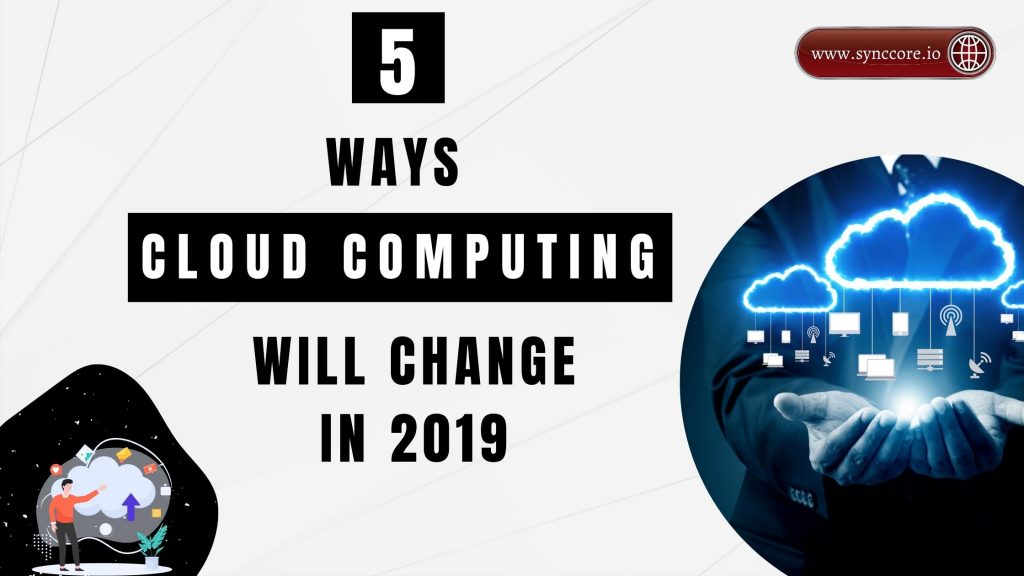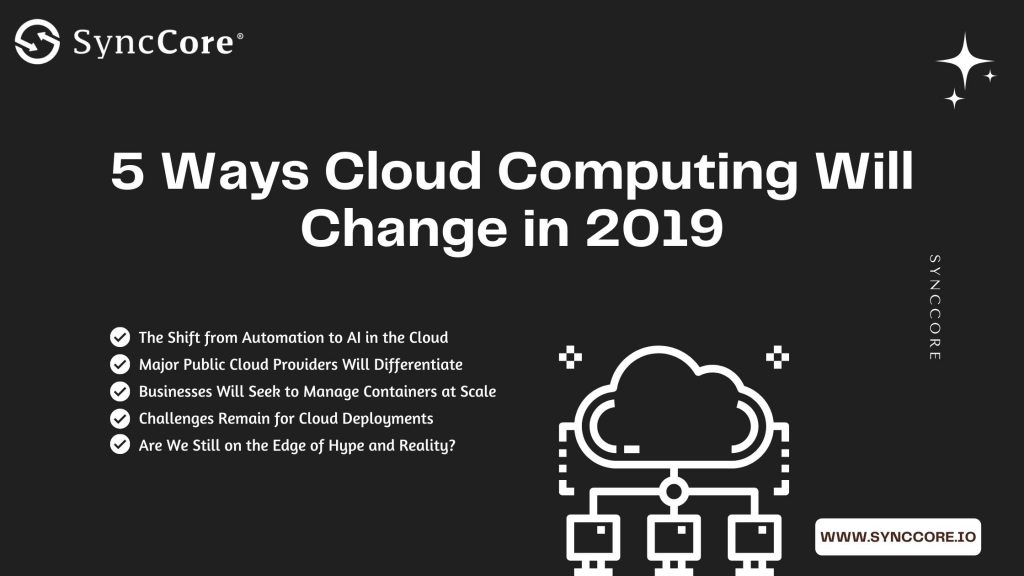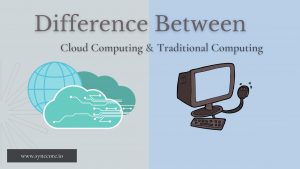Table of Contents
5 Ways Cloud Computing Will Change in 2019
In 2018, multi-cloud strategies hit new heights of popularity, with 86 % of businesses opting for a multi-cloud strategy, according to a recent Virtustream survey. Despite widespread acceptance, multi-cloud’s importance is anticipated to rise even more in 2019 as businesses seek to prevent vendor lock-in and increase flexibility in implementing the most applicable cloud technology across departments and functions.

While a multi-cloud strategy has the added benefit of increasing ROI, organizations are more interested in better performance and autonomy. A multi-cloud strategy allows businesses to install various cloud apps to meet their needs across the enterprise while using technologies like Kubernetes to containerize and deploy applications across different cloud providers as needed.

1. The Shift from Automation to AI in the Cloud
As cloud deployments become more sophisticated, IT teams must pay close attention to where and how the cloud runs. As a result, there has been a general move to cloud-based monitoring, resource allocation, and troubleshooting automation.
The next stage, emerging from the fluid nature of cloud utilization, is to scale this process automation into actual, flexible artificial intelligence. This will most likely happen in 2019. The growth of a multi-cloud strategy, along with concerns about vendor lock-in, has led to less static cloud strategies, which means businesses will need to embrace adaptive process automation to keep multicolored infrastructures running.
Auto healing is undeniably valuable to any cloud team, but without really adaptive AI, keeping up with the changing complexity of the cloud ecosystem will become increasingly challenging.
2. Major Public Cloud Providers Will Differentiate
For the major public cloud providers, 2019 will be business as usual in certain aspects. The Infrastructure as a Service model is well-established in today’s organizations, and providers embrace any new technology that reduces CPU and RAM usage.
However, as multi-cloud becomes more common, the big providers will have to demonstrate their value to an organization’s IT strategy more than ever before. Major cloud providers will want to differentiate themselves based on their strengths. Google, for example, is expected to emphasize its AI credentials, whereas Microsoft will emphasize its workload migration capabilities.
This distinction will be crucial for incumbents, as 2019 may be the year they face increased competition from other public cloud providers. While enterprises outside the United States continue to strengthen their capabilities domestically, probably with an eye on worldwide expansion, IBM’s acquisition of Red Hat heralds prospective rivalry in the cloud market.
3. Businesses Will Seek to Manage Containers at Scale
Businesses have almost uniformly recognized the value of containerization. In 2019, the challenge will be to move beyond early container adoption and use them to handle larger-scale deployments.
Expect smaller, specialist businesses to be snatched up as more prominent vendors strive to improve and differentiate their products with specific skills.
In general, the computing landscape is anticipated to fragment further, increasing competition among cloud providers. Serverless computing, for example, will almost certainly become more prevalent in 2019. Furthermore, open-source serverless solutions may begin to fight for developer approval, influencing the technological ecosystem’s future for years to come.
4. Challenges Remain for Cloud Deployments
Businesses attempting to adopt cloud efficiently face challenges, especially as complexity grows. The trend of designing Lego-like building pieces to help standardize and organize cloud stacks is likely to continue, especially as businesses understand the benefits of the continuous integration/continuous delivery approach that the current pace of cloud innovation necessitates. As development teams seek to fine-tune the software, companies should look to open-source technology to reduce disruption with each new implementation. This method has clear commercial benefits since it allows teams to more easily pinpoint changes in productivity as a result of software implementations.
5. Are We Still on the Edge of Hype and Reality?
Edge computing is gaining popularity. With the growing number of devices connected to the cloud, continuous technology testing, and the rise of 5G, 2019 is projected to witness more mature edge deployments. The new 5G standard will be one of the most potent drivers of deployment, with its higher dependability than 4G opening up an unlimited number of new applications. It will enable organizations to comprehend and exploit data collected at the edge quickly. With multi-gigabit per second speeds and one-millisecond latency, more data can be farmed off and used in crowdsourced intelligence than ever before.
While edge computing will be one of the differentiating technologies that will usher us into the next frontier of a fully connected world, proof of concept will be a critical factor in requiring improved solutions from cloud providers to ensure that edge computing is both practical and financially viable before it begins revolutionizing wearables, cities, and robots.
If you are looking for Cloud Services, Never Worry About Data Loss Again SyncCore Cloud is one of the best industry solutions. Check out SyncCore Cloud Services Here. For inquiry mail us at [email protected]



